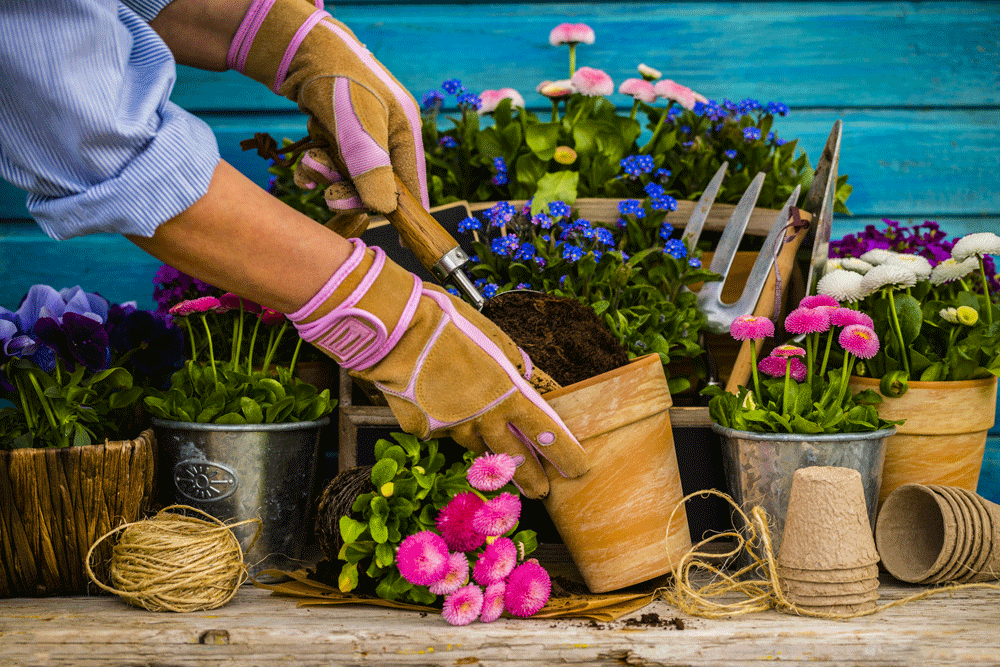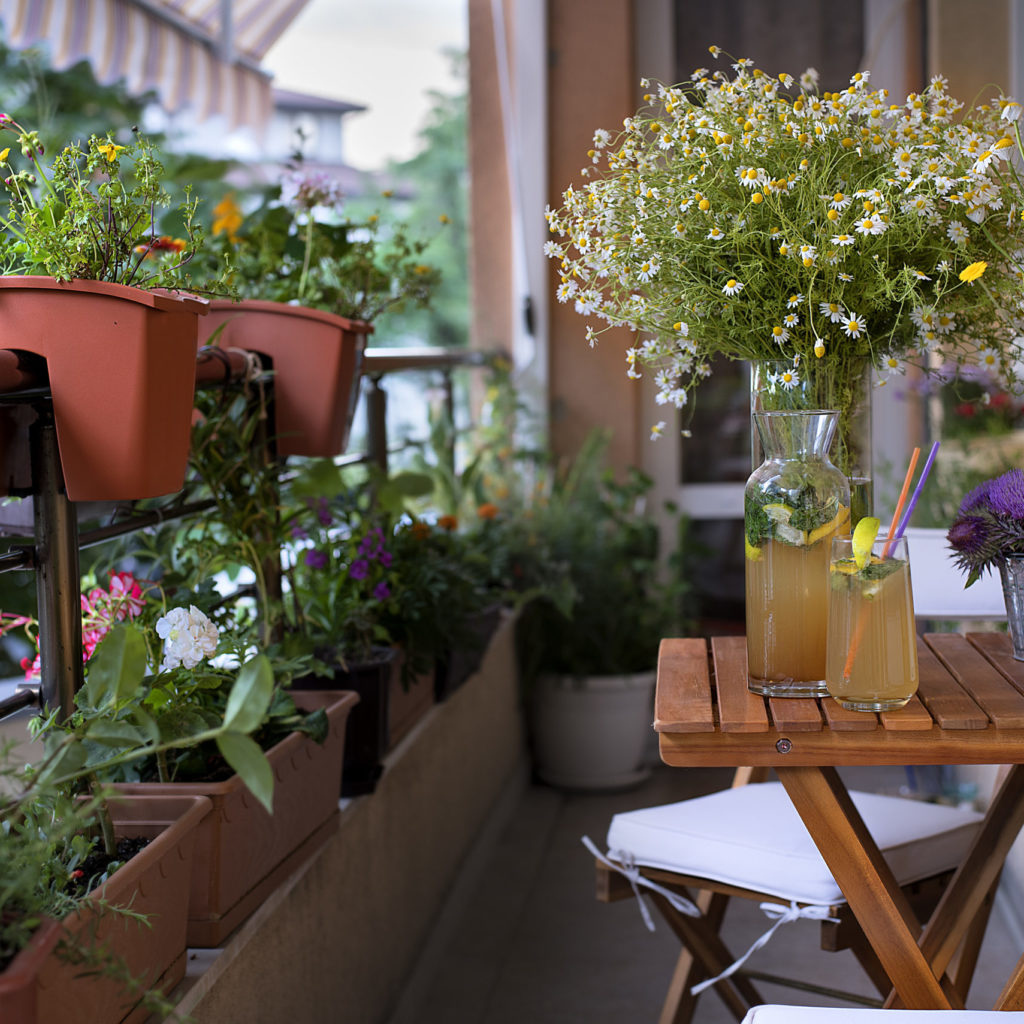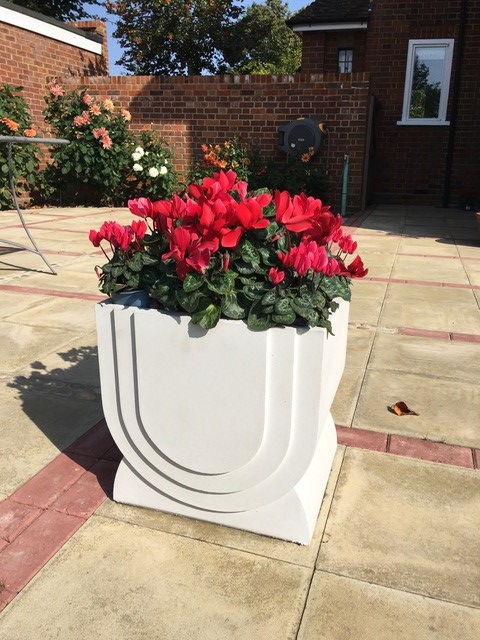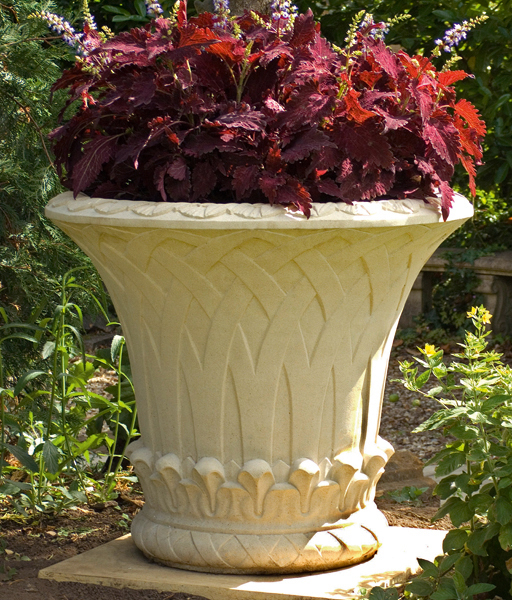Winter Container Gardening Guide
The grey, damp days of winter are often reason enough for gardeners to lay down their tools and take a much-needed break.
But during even the coldest of seasons, there’s plenty of opportunity to create a colourful, seasonal display, despite the chilly weather.
Winter container gardening is low maintenance but offers high impact. Choose bright flowers, vivid berries and interesting textures and create a satisfying spectacle for your garden, entranceway or patio. Plus, it’s easy to stamp your personality on your outside space by incorporating interesting containers, varying your colour scheme and planting an array of your horticultural favourites.
Low maintenance, container gardening at this time of year will help lift your spirits, even on the darkest of days.
In this week’s blog we share our top tips for choosing, planting and looking after your winter container gardens.
What can I use for container gardening?
When it comes to choosing the best containers for your garden, there’s so much choice available and the options are only limited by your own imagination!
For ease, opt for ready-made grow bags, pots, planters, hanging baskets or window boxes.
Or, upcycle cans, chimney pots, crates or even an old sink or bathtub for a quirky, repurposed take on this easy and low maintenance gardening trend.
What are the advantages of winter container planting?
The cold, grey days may not be the most welcoming, and teamed with rock solid soil, we can sympathise with those keen to avoid gardening at this time of year. And this is where container gardening comes into its own. As well as providing all the health benefits of encouraging us to be more physically active outdoors this winter, container gardening has the added benefit of being low maintenance.
The other benefits of container gardening are:
- Great accessibility – raised on an elevated surface or planter feet, containers provide easy access for small children, those with mobility issues and the elderly.
- Easy to move – containers can easily be moved as often as you wish and brought indoors if you need to protect delicate plants from cold snaps. Nestle amongst shrubs one week and move to your patio the next. Position close to your home during the winter so you don’t have to venture too far into the garden on chilly days and reposition to shaded areas during hot spells.
- Low maintenance – the small surface area of containers means heavy digging isn’t required and is also a great way of preventing weeds. Plus, watering and weeding is as easy and can be.
- Prevents pesky pests and diseases – position your favourite container plants away from the main garden area to prevent problem pests from moving between plants. Plus, container plants have fewer problems with diseases than those grown in garden beds too.
- Great variety – the great thing about containers is that you can easily grow plants that require different soil types next to each other.
- Easy fertilising – it’s easier to keep your plants well-fed in a small and confined container area as less nutrients are lost or absorbed by neighbouring plants in a garden bed.
- Control those space invaders – garden mints and bamboo will spread like wildfire if left to their own devices in a garden bed – so containing these vigorous growers in a planter or trough is a great way of keeping them tame.
What can you grow in containers?
Depending on the size of your container, planter or pot, and of course the climate, a whole abundance of plants will thrive in a pot, planter or trough. Herbs, vegetables, annual bedding plants and bulbs, perennials, shrubs and even small trees can grow successfully in containers.
Top tips for choosing plants for your containers:
- Choose compact cultivars and dwarf trees where space is restricted
- Consider the amount of sun and shade available throughout winter, when choosing both the plants and their position
- Decide if you want to plant single species or a combination. Both options will offer completely different and interesting looks
- Annuals or perennials? Winter annuals will need to be removed from pots when they die off, but offer a bounty of colour during the grey months
- “Thriller, spiller, and a filler” – use this simple gardeners’ guide by choosing one focal-point plant, additional plants that spill over the container’s edge and finally plants that fill in any spaces
- Elevate larger containers by incorporating an obelisk to support taller plants or trail small creepers.
Choosing the right planters, pots and troughs
Which container size is best?
It’s best to decide what you would like to plant before you select your containers, as this will determine the right size and growing space. Think about the size and shape of your plants’ root systems and opt for containers that offer generous planting room.
Remember that rootbound plants can dry out quickly and need plenty of space to thrive. This is especially true if you’re planning to combine a number of plant varieties in one container.
Haddonstone’s extensive range of stylish contemporary and traditional stone planters offer generous planting room and are available in a range of colours.
Drainage
Waterlogged plants will quickly fade and overwatering is one of the main causes that may plants die. Prevent soggy soil by ensuring your planters, pots and troughs have a drainage hole in the base to allow excess water to drain away.
All Haddonstone garden planters feature a good-sized drainage hole and are suitable for all plant varieties.
Materials
Choosing containers in the right, robust material is important in ensuring your containers can withstand any weather conditions and stand the test of time.
Clay and terracotta pots are popular but as they can easily break during cold snaps, are unsuitable for year-round hardy perennials and shrubs.
Wood is a good material for containers, offering a natural aesthetic and able to protect roots from the changing temperatures. Avoid wood that has been treated with certain chemicals or creosote which can be harmful to your plants.
Metal looks great in the garden, but choose carefully as containers made in this material will conduct heat and so can expose sensitive roots to severe heat and cold.
Cast stone planters are robust, frost-proof and can easily withstand all fluctuating weather conditions. Available in a broad range of styles and shapes, they are a great investment, offering style, generous planting room and longevity. As cast stone does not conduct heat, planters and troughs in this material offer great protection for your plants.
It’s also worth noting that darker coloured planters and plant pot will conduct heat, whereas light-coloured alternatives will keep the soil cooler than dark containers.
Ten container preparation top tips
- For large containers that will be heavy when filled with plants and soil, position in the intended place before planting
- Adding a layer of grit, stones or pot shards can block drainage holes, leaving winter plants waterlogged. Instead, place a layer of newspaper over the drainage hole before filling with soil to allow excess water to run away
- Place a layer of polystyrene at the base of a planter to reduce how much soil you will need to add
- Garden soil is very dense, so instead choose your compost and fertilizer according to your chosen plants’ care instructions
- Pre-moisten container soil before you start planting
- Add a layer of horticultural fleece to containers bearing lots of holes to prevent soil loss
- Position planters on planter feet, or simply use old bricks to elevate and avoid waterlogged soil
- Some planters and containers may need to be lined to prevent rust stains developing. Haddonstone’s cast stone planters, urns and troughs do not require a liner unless using a compost containing fertilisers or peat, in which case, opt for a polythene planter liner
- Densely pack plants in a container and prune when in place
- Remember to leave space for watering by not filling pots right to the top.
Container gardening care
So, how do you keep your winter container gardens in tip-top condition?
Even during winter, container soil can dry out quickly, so remember to water and feed your plants regularly and depending on the plant and pot size and species. Spreading a layer of mulch will help retain the moisture and is useful during the colder and warmer seasons.
Container plants also thrive with regular feeding. Add a diluted fish or seaweed fertiliser every fortnight and adapt the regularity depending on how well your plants respond.
Regular deadheading, pruning and removing dead leaves will help keep your plants looking in pristine condition. Replace any plants that don’t do well or to help create more room for other plants.
As with any gardening, you’ll want to regularly keep an eye out for pests and disease.
Winter container plants – which are best?
Winter heather (Erica carnea ‘Winter Beauty’)
A pretty, hardy perennial that is at home in a garden bed as a container. A native species from the Alps, this compact evergreen can withstand even the coldest of snaps. As well as being very low maintenance, winter heathers will provide colour from late autumn to early spring, and return year after year, making them not only easy to care for, but a great little investment too.
Cornus (dogwood)
An incredibly showy shrub in winter – dogwood demands attention. Its spicey, fiery tones are certain to add dramatic colour to any winter garden. Adding a young cornus to a large enough container will provide height, structure and colourful contrast. Remove from the planter by spring and reposition in a garden bed. Achieve similar height and structure without the vibrancy of dogwood, by planting wafty and robust Carex flagelliferaarex.
Cyclamen persicum
Another popular winter favourite, diminutive cyclamen will add a stunning splash of colour to any container. Contrast their eye-catching, rosy and white petals with other container plants, or simply fill a planter with a group of them. Although relatively hardy throughout winter, it’s best to reposition cyclamen indoors before very severe frosts and snow. Similar in scale, winter-flowering pansies and violas are a great alternative to cyclamen if you want to achieve a more multicoloured spectacle.
Skimmia japonica
Japanese skimmia is a stunning, evergreen shrub that can grow to 6m once established in the ground. Smaller versions are available in good garden centres, meaning you can add this cultivated, ornamental plant to a large garden container. And you won’t be disappointed. Choose the ‘Rubella’ variety for an abundance of fragrant, deeply blushed buds from early autumn through to the end of winter. Gaultheria procumbens, with its slightly lighter-coloured leaves and cheery red berries would be a lovely alternative.
Helleborus (Christmas rose)
Add long-lasting winter interest to any container with hellebore, a firm gardeners’ favourite. Easy to grow and fully hardy during the colder seasons, these perennials do best in shade and offer nodding flowers available in an array of pleasing colours. Overgrown hellebores can be transferred to a garden bed, but do be careful as they can resent root disturbance. Position pot-bound hellebores next to shade-loving companion plants like bronze or burgundy evergreen Heuchera.
The Royal Horticultural Society is the world’s leading gardening charity and has lots of advice for choosing and caring for all kinds of plants, on its website.
We can help you choose the perfect garden planters
Whether you’re growing them indoors or outdoors, it’s important that your plants are kept safe and can be easily cared for.
Planters, troughs and urns are great containers for your plants, whether you have a large garden or a small outdoor patch.
We have a wide range that are perfect for your winter blooms, so contact our friendly team today to discuss the options and find the ideal container for your plants.
Contact us todaySpeak to our team
Whether you’re working on a private residential or large commercial project, or if you are interested in home and garden products, our friendly and expert team are happy to discuss your requirements.








